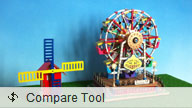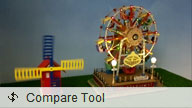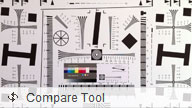Nokia X7-00 review: The stealth xpress
The stealth xpress
Good 720p video capture
The Nokia X7 shoots in 720p resolution at 25 fps and offers digital image stabilization. Clips are stored as MP4 files. Unlike the still camera, the video camera actually fares pretty well.
The videos are shot in pretty high bitrate - about 12Mbps. The amount of resolved detail is good enough, colors look nice and noise levels are kept reasonably low. Videos hit the 25fps target right on the mark and there are no repeated frames either.
Finally you get a smart digital zoom in video mode just like on the Nokia N8. It means that you can zoom in to about 2.5x without losing detail. It's pretty impressive if you think about it and the fact that the X7 is one of the very few handsets to have it earns it an extra point.
The video-recording capabilities of the X7 make up big time for the poor still imaging.
Here’s a video sample from the Nokia X7 – 720p@25fps (10s, 15.6MB). That may seem a bit big for a 10 second video, but that's the price you pay for the higher bitrate.
Also, you can check out this longer sample we've uploaded to YouTube. There's one more sample - we shot our res chart and zoomed in to show you the effect.
Video quality comparison
We entered the Nokia X7 in our Video Compare Tool database too and put it head to head with other 720p mobile camcorders.
The X7 performed very well in our synthetic video quality tests. It handled the switch from light to dark very quickly and the quality remained good even in the poorly lit scene. The resolution chart also points to good resolution for a 720p video, but there's a noticeable pink spot in the middle.



Nokia X7 in the Video Compare Tool
Good connectivity but lacks video output
The Nokia X7 is a true globe trotter. All kinds of network connectivity options are at your disposal - quad-band GPRS and EDGE along with penta-band 3G with HSPA. You can go pretty much anywhere in the world where there's GSM or UMTS signal and connect. The 3G is pretty fast too with 10.2Mbps downlink and 2Mbps uplink.
USB is version 2.0, with the standard microUSB port capable of charging the phones besides transferring data. We already covered the USB On-The-Go functionality, but just for the record, we had very little trouble connecting to USB mass storage devices - phones (including Andoids), card readers and thumb drives. Unpopular cards were a problem though but how often would you need to connect a CF card anyway.
Bluetooth connectivity is version 3.0 with stereo support and there's a WirelessN-enabled Wi-Fi radio.
The microSD card slot can be used for transferring data to and from your X7. The tray system used to house the card is quite a nuisance though.
The one disappointing side of the otherwise excellent connectivity on the Nokia X7 is the lack of microHDMI port found on the N8 and surprisingly even SD TV-Out via the 3.5mm audio jack.
Much improved web browser
The web browser has been a sore weak spot in touch-enabled Symbians so you'll be pleased to hear that Symbian Anna fixes a lot of the issues. Also, the 4" screen of the Nokia X7 makes it a great candidate to show off the best of the changes that Anna brought.




The browser in Symbian Anna has received much needed polish
The Nokia X7 browser has good page rendering and offers some nice features such as different font sizes (5 options), auto fill-in of web forms and a password manager. Panning is relatively smooth but zooming can be a little slow at times, taking a second to redraw the page content after you zoom out.
Some of the nagging issues in the browser were fixed too - you can now open a new tab easily (why it took Nokia this long to implement this we'll never know) and it takes you only one tap to get to the popup menu with the most useful browser options (it used to take two taps, which is one too many).
Along with the popup menu's shortcut on the right of the screen, there's also an always-visible back button on the left. They are quite small and don't cover much of the screen. It used to be that you needed two taps to go back a page too - once to make the back button visible and once to press it.
Back still uses the 3D stack of page thumbnails to let you choose how many steps back you want to go (it's an option that you can turn off if you prefer to go back one step directly).



Going landscape • the popup menu • opening new tabs is now possible
Another thing we're really pleased to see is how the QWERTY keyboard integrates with the browser. You can use the portrait QWERTY to start entering an URL and the list suggested sites pops up immediately. The previous screen required going back and forth between screens, which was pretty much unusable.
The Find-on-page feature enables keyword search. The visual history is a nice bonus that can help you find a page you've visited more easily. There's also a popup blocker.
Double tapping on a chunk of text zooms it in on screen, but again, the text doesn't auto fit to the smaller viewport and you still need to scroll sideways.
The Flash Lite 4.0 support is enough for playing Flash, but it’s not as impressive a performer as the desktop-grade Adobe Flash 10.3 for Android 2.2 and up. YouTube videos played inline in the browser but they used the mobile version (240p) of the video, which is heavily compressed. Flash games wouldn't work.
You can also choose to switch Flash off to cut down on loading times and save some data traffic.

YouTube plays inline but only the mobile version of the video stream
Overall, Symbian Anna pushes the web browser very far ahead of what it used to be. Symbian^3 users can't get the update fast enough, the difference really is night and day. Still, the browser is not quite as good as Mobile Safari or the Android 2.2+ browser.
Reader comments
- Arif khan
- 10 Oct 2020
- uNV
Bro create nokia acount nd open stor but sorry to say u can't use store becuase nokia service are not avalevel
- amr shehab
- 22 Jul 2020
- DhI
i can't make update software or open stor to download whatapp any help please
- love
- 13 Mar 2016
- f0B
hw can u put d phone on I done have d phone book.



